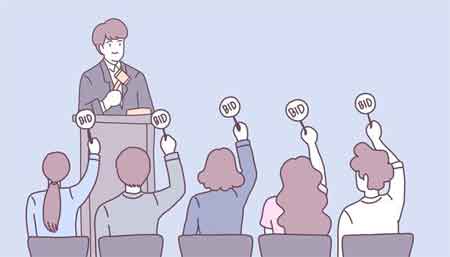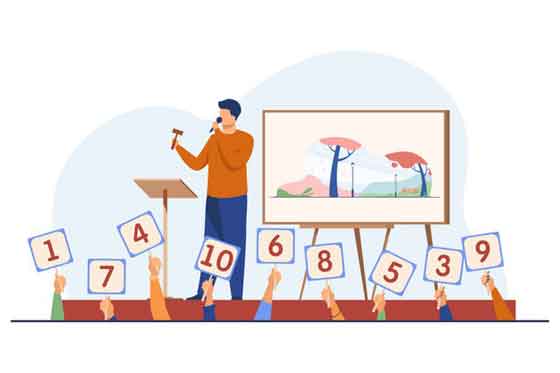Doing well at an auction doesn’t mean simply showing up and bidding. A smart buyer takes time to learn about the items ahead of time, takes time to become an informed bidder rather than an emotional bidder. Most auctions have a preview, and they are a great help in preparation. The preview may simply be an hour or two before the auction starts, or it may be a day or two before the auction. If the preview time is not listed in the auction ad, contact the auctioneer or auction house for the information.
Purpose and Materials

Many auctions now provide some pictures online, but these pictures are limited in both number and detail. They are useful for determining if you have questions and whether or not you want to check the auction in person, but they cannot replace the information or fun of the hands-on approach.
The preview allows an opportunity to see everything that’s being offered, something only higher end auctions do online. While auctioneers try to put the best items online, they may well miss a treasure, or simply an item that happens to attract you. This is also time to judge quality and condition. Some items look much better in person, some much better in the pictures. Size is especially difficult to judge online
For the preview, the essentials are a notebook and pen and a magnifying glass, preferably all small enough to fit into your pocket. A camera is not a bad idea, especially if the preview is at least a day before the auction. Some auctioneers may object to the camera, but most don’t mind. As you gain experience, you may want to take a portable blacklight, which can be useful for determining the age and composition of some glass, as well as for spotting repairs. We have provided you detail about auctions; if you want to explore your knowledge, look at more info.
Making the Rounds
Based on the ad, you will probably have a few things already in mind that you want to look at, but take the time to look through everything, even at least a glance at things you think you have no interest in at all. For some things, the auction may be your only chance to get a look at one in person. Allow yourself some child-like fascination at this stage.
As you go through the items, jot down notes about which ones you’re interested in, their condition, questions you may want to ask, and the price you’d be willing to bid. This last item is particularly important because it helps you avoid too much emotional bidding. Bidders have been know to let emotion and competition raise the price well beyond sensible value, something you don’t want to explain to your spouse later.
After the first time around, do it again. Although you may focus more on items already on your list, this also increases the odds that you’ll spot a treasure (even if it’s only a treasure to you). However, the main goal in this second round is to look even closer at items of interest to consider quality and condition.
When checking condition, use your hands as well as your eyes. Running your fingers lightly around an object can pick up irregularities it’s all to easy to miss otherwise. Be patient. This extra time also helps determine which items simply appealed to you because they were bright or odd and which ones have a more enduring interest. It’s okay to buy things that you’ll end up selling in a year or two, but you don’t want to pay too much.

Special Procedures
Be very careful with lids and handles. Before picking an item up, it’s best to remove the lid and set it aside. If the lid is taped in place, you should still put your hand over it to make sure it stays in place. Also, never pick an item up by the handle. That may be what it’s for, but it’s a bad way to discover that the handle was cracked. But down your investigative tools, and use both hands.
Always put items back where you got them. This is especially true of “box lots” (numerous items, usually of lesser value, all put into one lot). Auctioneers usually try to sort what goes into different boxes, either to gather similar items or to create a variety of interest. Others at the preview will be noting what is in which box, and it’s not fair to move items around.
As with so many things, common sense and courtesy are excellent guides. Since these previews are also social events, those guides will serve just as well when dealing with the other viewers. Take your time, and enjoy the experience.
